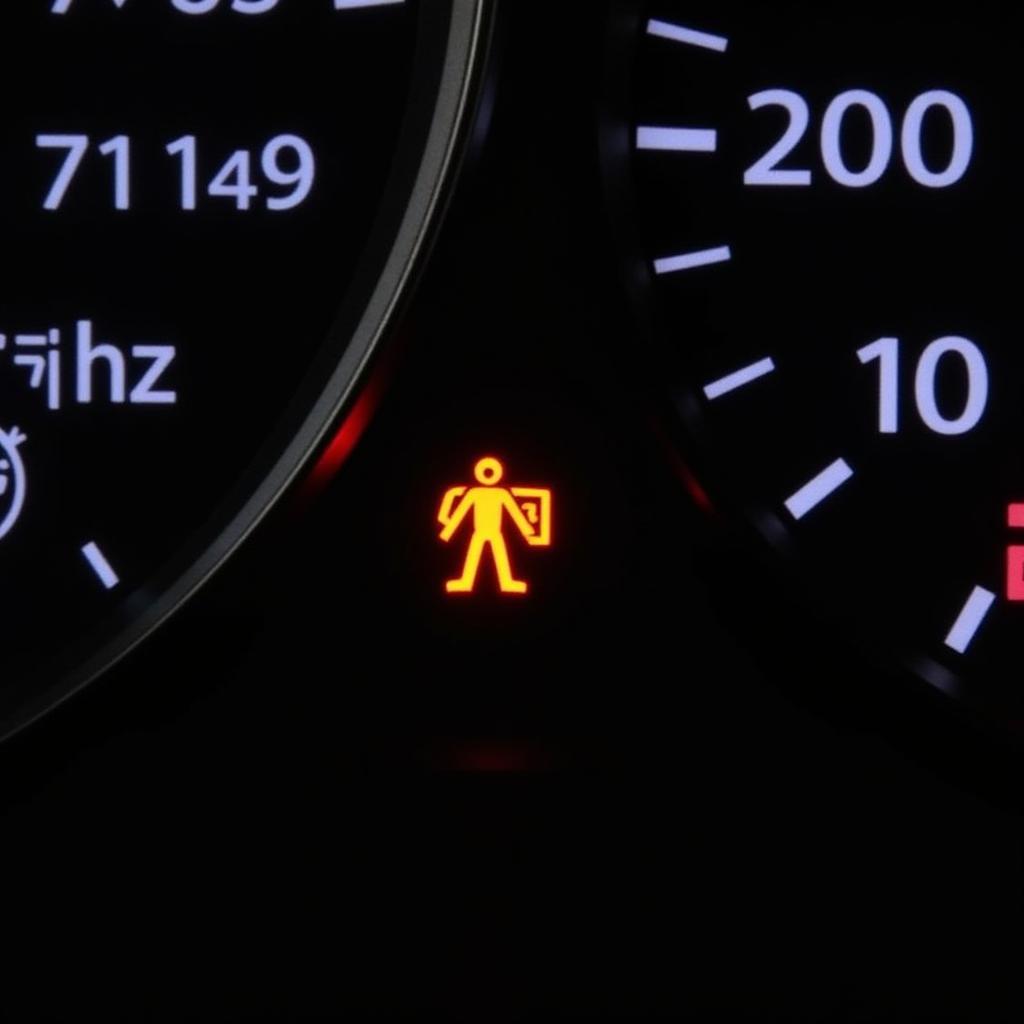If you’ve filled your car’s AdBlue tank but the warning light is still on, it can be frustrating. This article will guide you through the common causes and provide solutions to help you resolve this issue.
Understanding AdBlue and the Warning Light
AdBlue, also known as DEF (Diesel Exhaust Fluid), is a crucial component for modern diesel vehicles equipped with Selective Catalytic Reduction (SCR) systems. It helps reduce harmful nitrogen oxides (NOx) emissions. The AdBlue warning light indicates a problem with the system, such as low fluid level, a malfunctioning sensor, or a blocked injector.
Common Reasons for the AdBlue Warning Light After Filling
There are several reasons why the AdBlue warning light might remain on after filling:
1. Faulty AdBlue Sensor
The AdBlue sensor measures the fluid level in the tank and sends this information to the vehicle’s computer. A faulty sensor can provide inaccurate readings, leading to a false warning light.
“It’s like a fuel gauge that’s not working properly,” explains automotive technician, John Smith.
2. AdBlue Injector Issue
The AdBlue injector injects the fluid into the exhaust stream. If the injector is clogged or malfunctioning, it can prevent the proper flow of AdBlue, triggering the warning light.
3. Incorrect AdBlue Filling
Ensure you’re using the correct AdBlue fluid, as using incompatible fluids can lead to system issues. Also, double-check that the tank is filled correctly to the recommended level.
4. AdBlue System Malfunction
The AdBlue system is a complex network of components, and a malfunction in any part can trigger the warning light. This could include issues with the pump, the control unit, or the wiring.
How to Troubleshoot the AdBlue Warning Light
Here’s a step-by-step guide to help you diagnose and resolve the issue:
- Check the AdBlue Level: Ensure the tank is filled to the correct level. Double-check the fluid type and ensure it’s compatible with your vehicle.
- Reset the AdBlue System: Some vehicles allow you to reset the AdBlue system using a specific procedure. Refer to your owner’s manual for instructions.
- Check for Error Codes: A code reader can help you identify any fault codes related to the AdBlue system. These codes can provide valuable clues about the underlying problem.
- Inspect the AdBlue Injector: If possible, visually inspect the AdBlue injector for any signs of blockage or damage.
- Consult a Mechanic: If the warning light persists, and you’re unable to identify the cause, it’s crucial to take your vehicle to a qualified mechanic for diagnosis and repair.
Frequently Asked Questions
1. Can I drive with the AdBlue warning light on?
You should not ignore the AdBlue warning light. Driving with a malfunctioning AdBlue system can lead to reduced engine performance, increased emissions, and even engine damage.
2. What happens if I run out of AdBlue?
Running out of AdBlue will trigger a warning light and eventually lead to a “limp home” mode, limiting engine performance to prevent further damage.
3. How often should I fill the AdBlue tank?
The frequency of AdBlue refills depends on your driving habits. However, most tanks hold enough AdBlue for several thousand miles.
4. How much does it cost to repair an AdBlue system issue?
The cost of repairing an AdBlue system issue can vary depending on the specific problem and the severity of the repair.
5. Can I add AdBlue myself?
Yes, you can usually add AdBlue yourself. Refer to your owner’s manual for the location of the filler cap and the recommended procedure.
Conclusion
A persistent AdBlue warning light after filling can be a sign of a serious problem. It’s important to address the issue promptly to avoid further complications. By understanding the common causes and following the troubleshooting steps outlined above, you can increase your chances of resolving the issue effectively. Remember, if you’re unsure about any aspect of the AdBlue system, always consult a qualified mechanic.


